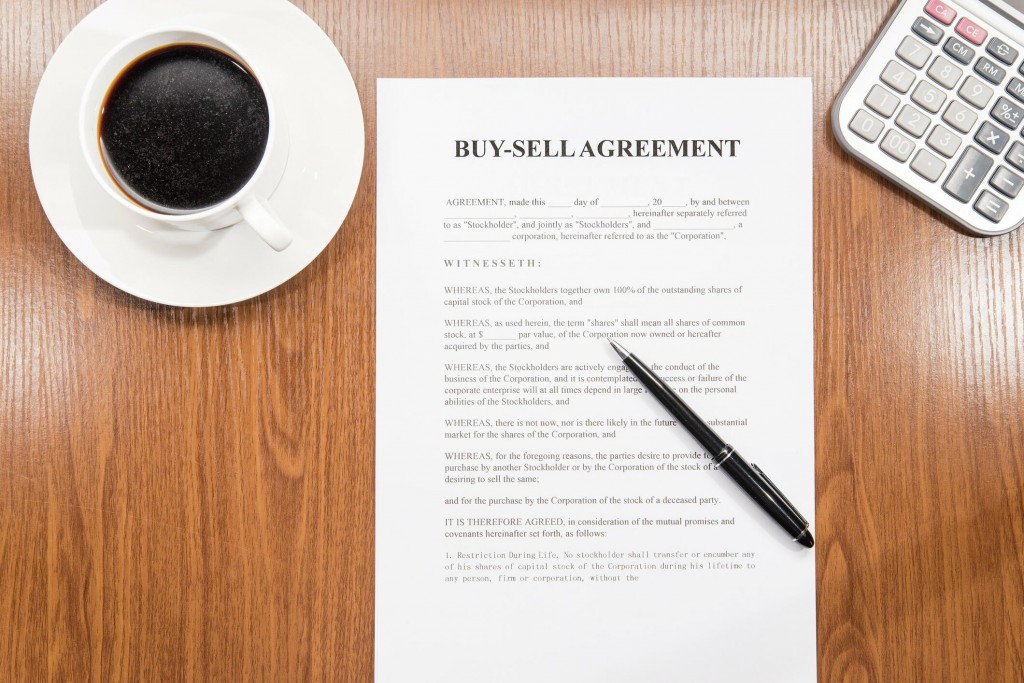
Archive for October, 2019
The Three Laws of Legacy Teaser
By: Patrick Ungashick

Several years ago, I was sitting in one of our conference rooms with a client. Laid out on the table in front of him were two written offers to buy his company. Both were all-cash deals, but one offer was for several million dollars more than the other.
The client sat there with his fingers steepled under his chin, looking down at the two sets of documents, asking out loud, “Am I crazy? Am I crazy for even considering the lesser offer?”
Now, this client had not planned on selling his business. However, about six months earlier he had been diagnosed with a rare form of cancer. The survival rate was five percent after five years. Rather than spending his last few years working, he wanted to spend that time with his family. A thorough process marketing his company to several hundred potential buyers had produced these final two offers. Again, one was for several million dollars more than the other.
I sat there listening as the client kept saying, “Am I crazy? Am I crazy for even considering the lower offer, given the fact that my paycheck is going to be taken away from my family, with all of the medical costs that my family will face? Am I even crazy for even considering it?”
There is one word that summarizes why this client would even consider taking the lower offer: Legacy. This word causes more business owners emotion when they’re standing on the one-yard line than any other one word I know. Few owners would define an exit as being “successful” if somehow their exit failed to uphold strongly-held values and beliefs. In this case, the client with cancer strongly suspected that the buyer offering more money was likely to run his company inconsistently with the values upon which he built his company. The client was worried about layoffs, and reduced service quality for customers. He felt conflicted—just how far did his responsibility to the business extend after he exited?
To learn more about this client’s story, and to understand the Three Laws of Legacy and you can apply them to ensure you exit happily and successfully, click here to download our free white paper.
If you have a quick question coming out of this article or, if you want to discuss your situation in more detail, we can set up a confidential and complimentary phone consultation at your convenience contact Tim 772-221-4499

Why Your Company’s Profitability is Not the Same as Exitability
By: Patrick Ungashick

It’s not difficult to evaluate your company’s profitability—it’s right there, in black and white, in the financial statements. This clarity is beneficial, because company profitability is arguably the single most critical area of business performance. As the saying goes, revenue is vanity but profits are reality. So when you one day want to exit, the more profitable your business, then likely the more valuable it will be at your exit.
But just because your company is profitable, does that mean it is exitable? Admittedly, I made up the word “exitable,” but for a good reason. An exitable company is one that is well prepared for the owner to exit and will fulfill the owner’s business and personal exit goals. Many companies are profitable but not exitable. If your company has any characteristics that limit its exitabilty, when you go to exit you will find the path more difficult than you expected, the company less valuable than you desired, or at worst your exit completely blocked. Moreover, if you only find out all these issues right when you want to exit, it will be too late to do anything about it.
Profitability and exitability are not the same. There are a surprising number of ways that businesses can grow and operate profitably, without necessarily being exitable. Here are four common situations where this can occur:
Owner Dependency
The first common limitation on exitability is owner dependency. If your business is dependent on you, or any other owners, to operate and grow profitably, this typically limits exitability. The company’s value cannot walk out the door when you do. It’s also ironic because your company probably would not be what it is today if you had not worked as hard as you have up to now, perhaps over many years. It’s great to be good at what you do, but if your company is losing an essential employee when you exit, that undermines exitability. It’s not enough either to say that the company could manage to survive without you. It has to be able to thrive without you. Buyers want to know that the business’s profits will not slow down nor go away when you do.
Customer Concentration
The second common limitation on exitability is customer concentration. This statement may surprise you because customer concentration is usually a byproduct of a job well done. Your company may have served one or a few customers well, and they’ve responded by sending more and more business your way. Then, one day, you look around, and 20%, 30%, 50%, or more of your revenue and profits comes from these few customers. These customers might be generating many profits, but customer concentration usually limits exitability. If you intend to sell your company one day, your future buyers likely won’t have longstanding relationships with these customers, creating risk for them. Buyers often pay less for companies with customer concentration or pass on purchasing that company altogether. Customer concentration thus becomes a serious limitation on exitability, no matter how profitable those customers may be.
Co-Owner Goal Misalignment
The third way many companies experience limited exitability is if they have co-owners who are not in alignment with one another. We did a research study a number of years ago and it revealed that 7 out of 10 small to medium-sized privately-owned companies have ownership shared among two or more co-owners. We often see co-owners who are in strong alignment with one another for years and sometimes even decades while they are working together to grow the business because they share one clear priority, which is to increase revenues and profits. The problem arises when one or more of those co-owners get closer to exit because the goals often change and the co-owners find themselves no longer in alignment. For example, one co-owner may want to sell now, while another wants to wait. Alternatively, one co-owner may wish to sell for a lower price, while another wants to keep growing the company and hold out for a higher price. Whatever the situation, when the goals change, the co-owner alignment changes, and often the co-owners don’t even realize it’s happening until close to exit, at which point it can completely undermine a company’s exitability. No matter how profitable your company may be, if the co-owners are not in alignment, exitability will suffer.
Unclear Plan for the Future
The fourth way companies experience reduced exitability, regardless of profitability, occurs if the company lacks a clear, compelling plan for future growth. For a company to be highly exitable, it must offer a buyer or successor a credible and compelling vision for how that company will grow going forward, after your exit. How profitable the company has been up to this point is nice, but what the company is expected to do in the future drives value and exitability.
Many profitable companies don’t have the systems and habits that help create this compelling plan for future growth. For example, the company leadership team might not do robust strategic planning, or perhaps they do not diligently measure monthly or quarterly performance against financial budgets and operational benchmarks. Without experience doing effective strategic planning, and without a clear track record of being accountable for achieving business goals, it may be unclear to the future buyer or successor whether or not this company can sustain its future growth after your exit. This lack of management practices undermines exitability, even if the profitability has historically been excellent.
Conclusion
These are just four situations that can limit a company’s exitability—and they are prevailing. Growing profits, and getting a company ready for exit, are two different needs. To learn more about preparing your company for exit, consider this educational webinar or contact us with your exit planning questions.
If you have a quick question coming out of this article or, if you want to discuss your situation in more detail, we can set up a confidential and complimentary phone consultation at your convenience contact Tim 772-221-4499

Why a Buyer’s Motives Determine Your Company’s Multiple
By: Patrick Ungashick

“What will my company be worth at sale?” is perhaps one of the most common questions business owners ask when contemplating their exit. It’s not only owners who expect to sell their company to an outside buyer ask either. If you intend to sell your business to your employees, you still need to know the answer to this question. Even if you want to give your business to your kids, this question is essential to plan for taxes and other financial issues. Regardless of which of the four exit strategies you intend to implement, you need to know what your company is likely worth to an outside buyer.
That’s where the problem occurs. How do you know what a buyer might pay for your company when typically there are multiple potential buyers? You can and should research average company sale prices in your industry (usually expressed as a multiple of adjusted EBITDA (LINK) or in some cases revenue)—if you don’t know these benchmarks you are operating blindly. However, this information only tells you what other companies have been selling for. It does not specifically address what YOUR company may sell for. Even more frustratingly, you may have heard stories from other business owners (or your advisors) about how they got wildly different offers when their companies went up for sale. Why does that happen?
Different Buyers = Different Motives
When you go to sell your company, typically you and your advisors will follow a process that confidentially contacts many potential buyers (often dozens to even a few hundred) to solicit inquiries and offers to purchase the company. The one thing that all of these potential buyers have in common is they are seeking ways to grow their businesses, and perhaps an acquisition of your company will help them drive their growth. Also, while they share the same desire to drive growth, these buyers are different from each other. They are in different situations, have different needs, and face different internal and external challenges. These differences manifest into different motives from one potential buyer to the next. Furthermore, these different motives likely translate into different multiples one buyer may pay for your company compared to another.
For example, here are some of the common motives that cause different potential buyers to be more (or less) interested in buying a company:
- Geographic expansion: the buyer lacks operations or presence in your location and sees acquiring your company as a means to launch in your territory.
- Diversification and Cross-Selling: the buyer wants access to the products and services that your company has, to complement its existing products and services.
- Market Share / Client Acquisition: the buyer seeks to increase its market share, scale, and/or profitability by acquiring your customers and clients and adding them to its platform.
- Talent Acquisition: the buyer seeks to expand its team by acquiring your company and the proven talent that you have assembled.
- Technology Acquisition: the buyer wants key technology that you have developed to leverage across its operations to open new markets, reduce its costs, embed in its services, etc.
- Competition Elimination: the buyer wants to acquire your company to remove it as a competitor, or to prevent another competitor from buying your business.
While any buyer may have all of these motives to some degree, typically each buyer will have one or perhaps two over-riding reasons that drive its interest in acquiring your business—and the price it is willing to pay. Different buyer motives translate into different prices.
That is why if you and your advisors run an effective process which attracts multiple qualified buyers, you are likely to experience a diverse range of bids. In our experience, it is common that the range between the lowest and highest offers is two to three times more or greater.
For example, assume your company is doing $3 million adjusted EBITDA (link). After marketing your company to multiple potential buyers, you receive the following bids:
- Buyer A – offers to pay $15 million for your company (5 times EBITDA)
- Buyer B – offers to pay $30 million for your company (10 times EBITDA)
- Buyer C – after initially seeming very interested, this buyer withdraws from the process without making an offer
On the surface, it would look like either Buyer A or Buyer B should go back to grade school to learn basic math, because how can one buyer offer five times EBITDA while another offers twice that amount? Furthermore, what’s wrong with Buyer C because it seems they think your company is worthless. While no buyer is perfect and all buyers make mistakes, the more likely explanation is these three buyers have different motives in mind while evaluating your company, and these mixed motives translate into different multiples they are willing to pay.
What’s Important for You and Your Company
If different potential buyers all valued a business solely based on that company’s multiples of adjusted EBITDA, then all offers would be relatively similar. However, in the real world, this does not happen. Different buyers have different motives and pay different multiples.
Don’t fall into the trap of trying to anticipate one buyer’s motives over another’s, because it is nearly impossible to know a buyer’s internal dynamics, and motives change with time. Instead, focus on getting your company ready for exit and then be prepared to experience different motives producing different multiples. To learn more, watch this helpful webinar with several real case studies, and suggested tactics for you to follow.
If you have a quick question coming out of this article or, if you want to discuss your situation in more detail, we can set up a confidential and complimentary phone consultation at your convenience contact Tim 772-221-4499

Three Biggest Oops Inside Buy-Sell Agreements
By: Patrick Ungashick

Your company’s buy-sell agreement may be one of the most important legal documents in your life. It may not seem or feel that way most of the time, but if and when you need that agreement, it can either save you huge sums of money and incalculable stress and suffering, or it can cause you to lose huge sums of money and suffer incalculable stress. The outcome depends on whether or not your buy-sell agreement is well designed, or not. And, unfortunately many buy-sell agreements make one or more of several surprisingly common mistakes.
Quickly – What is a Buy-Sell Agreement
Buy-sell agreements (also commonly called shareholder agreements or member interest agreements) are legal documents that identify situations where ownership in the company may change hands, and then provide instructions on how to handle each case. The most familiar example is what happens upon the death of a partner. A buy-sell agreement usually requires the deceased owner’s heirs to sell the interest back to the company or the surviving owner(s) and at a specified price. This provision protects everybody: the deceased owner’s heirs receive a cash payout while the remaining owner(s) move forward without unwanted business partners. Most buy-sell agreements have provisions to address a shareholder’s death or other triggering events, such as retirement or severe disability.
Mistake #1 – Not Address the Sale of the Company
The first common mistake deals with a triggering event that many buy-sell agreements do not address—the sale of the company. If you wish to exit by way of sale, but one or more of your co-owners don’t want to sell, typically you cannot make them sell their portion of your company if your buy-sell agreement does not directly address this scenario. So, if a co-owner does not want to sell, then you might not be able to sell either. Most buyers will not want to acquire less than 100% of a company, particularly, when one of the owners was already opposed to the deal.
This reality often comes as an unwelcome surprise to owners seeking to exit. Some owners only learn their partners can block a sale when a potential buyer is standing in the doorway, and they discover that the buy-sell agreement does not address a sale. This omission leaves business co-owners at risk. To fill in the gaps, be sure your agreement includes “drag-along” and “tag-along” rights. These odd-sounding provisions bind co-owners together when selling the business to an outside buyer. The “drag-along” part requires that if a majority of the owner(s) decide to sell the company, all of the other owners are required to join the deal. This clause protects majority co-owners against minority co-owners holding up a sale. “Tag-along” is the reverse—majority co-owner(s) cannot sell their interest without tagging along and including the minority owners at the same price and terms. This stipulation protects minority co-owners from being left out of any deal. Together, these provisions bind all the co-owners into a single block and restore the majority owner’s control over the decision to sell the entire business.
If you wait until a buyer is standing in your doorway to address this, you run the serious risk of undermining or killing your deal.
Mistake #2 – Inadequate Valuation Method
The second common mistake is the buy-sell agreement uses a valuation method that produces an undesirable outcome or price, or both. Every buy-sell agreement will have some provision for determining the value of the company (or a partial interest in the company) upon a triggering event. There are several commonly used methods, with the three most common being:
- Defining a fixed price (“The company is worth $10 million”)
- Setting a formula (“The company is worth five times EBITDA”)
- Calling for and performing a formal business validation upon a triggering event
It is possible to define reasonable scenarios where any of these methods would be a good or a poor fit to accomplish what the business owners need. So, while some professional advisors will clearly advocate one approach over another, each method offers significant advantages and disadvantages, so there is no one-size-fits-all answer to which valuation method should be used.
Instead, owners (and their advisors) must do two things on this issue, both of which commonly get overlooked. First, the different valuation methods need to be discussed and carefully weighed to determine which fits best for your situation. This analysis rarely gets done, which is both dangerous and unnecessary because the question typically only takes a little time to evaluate and answer.
Second, the valuation method selected today needs to be reviewed and updated over time. Frustratingly, that rarely happens. Few owners get excited about “reviewing and updating my buy-sell agreement” as a project or task, for understandable reasons. However, over time, the valuation method used in your buy-sell agreement likely gets less and less current and relevant to meet your new reality. Then, one day, a triggering event occurs. At that point, it’s too late to make a change, and the obsolete valuation method or price can do more harm than good.
Mistake #3 – Bad Form
Exactly how does the buy-sell agreement work upon a triggering event is crucial, and there are different forms of agreements. For example, assume one owner dies. The buy-sell agreement calls for the deceased owner’s heirs or estate to sell that interest in the company, as you would expect. However, how will that purchase occur? For example, does the company purchase the deceased owner’s interest? Or, do the remaining owner(s) acquire the interest? Or can they split it? The buy-sell agreement’s form will answer this question, and the question typically has significant financial and tax considerations.
The different types of buy-sell forms typically include:
- Entity purchase (the company buys back the stock or units)
- Cross purchase (the remaining owners buy the stock or units)
- Wait-and-see (a combination of the two)
While there are exceptions, in most situations, a wait-and-see method offers the most advantages with few if any disadvantages. Ironically it seems to be the least commonly used form in our experiences. Under this method, the legal agreement does not predetermine who or what will be the buyer—the agreement will “wait and see.” The legal document usually accomplishes this by giving the business the first option to purchase the interest within a narrow window of time, such as thirty days. If this time period expires with no purchase, then the option shifts to specified individuals (such as remaining owners) to make the purchase. If these individuals do not purchase the interest within the second time period, then usually the agreement concludes that the third and final step is the business must purchase the interest. The wait-and-see sequence (easy to remember as Business-Owners-Business or BOB) gives owners and advisors flexibility to determine the best course of action upon a triggering event.
Avoiding Oops
Buy-sell agreements are critically important documents that, when triggered, can either cause a disaster or rescue you from one. You cannot afford to wait until a triggering event occurs, to discover that the agreement is lacking in some way.
If you have questions about your agreement, contact us for a complimentary and confidential consultation to discuss or review your existing agreement. Better to know about and fix a small oops now.
If you have a quick question coming out of this article or, if you want to discuss your situation in more detail, we can set up a confidential and complimentary phone consultation at your convenience contact Tim 772-221-4499.

 Tim is a Consultant to Business, Government and Not-for-Profits Organizations specializing in innovative and challenging ways for organizations to survive, to thrive and to build their teams.
Tim is a Consultant to Business, Government and Not-for-Profits Organizations specializing in innovative and challenging ways for organizations to survive, to thrive and to build their teams.